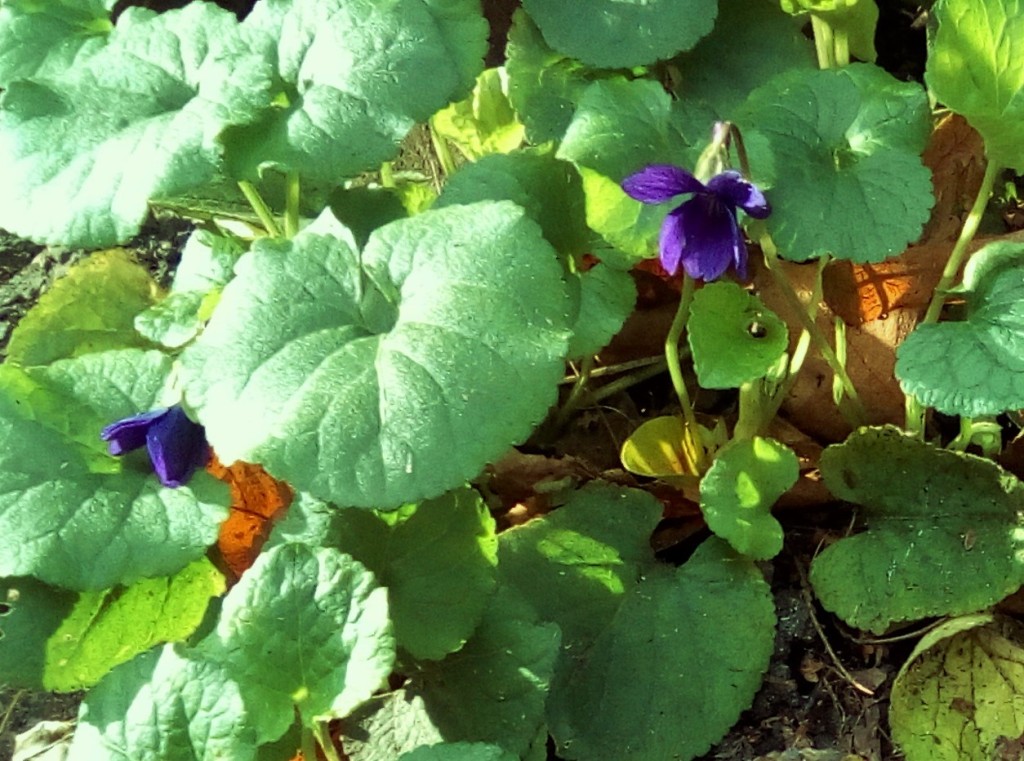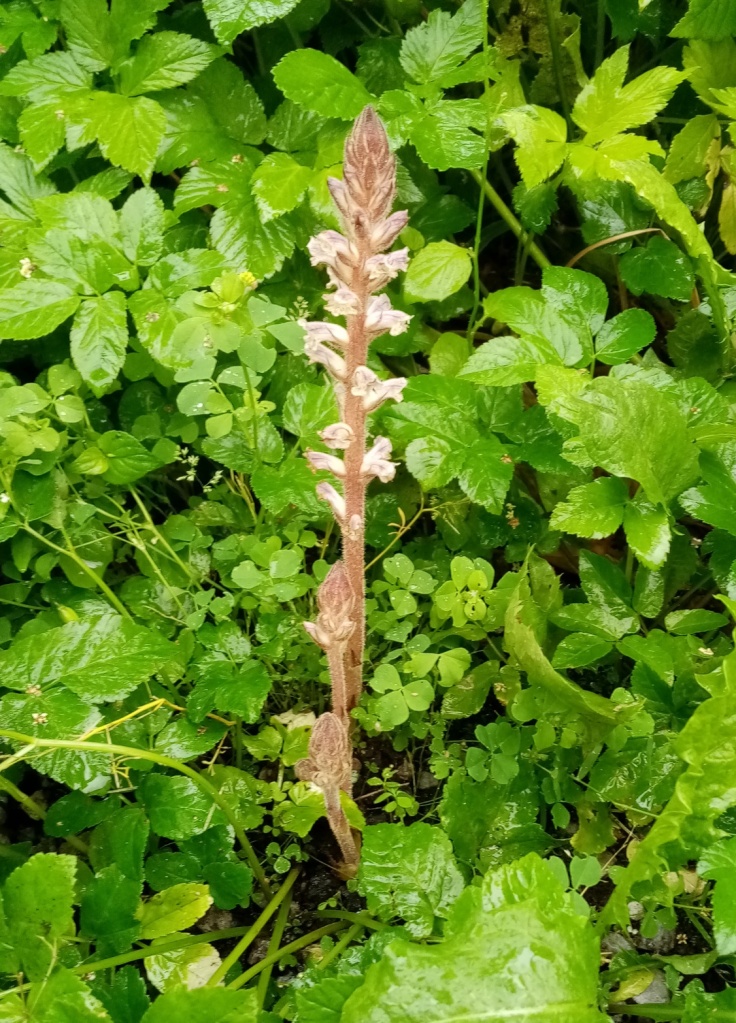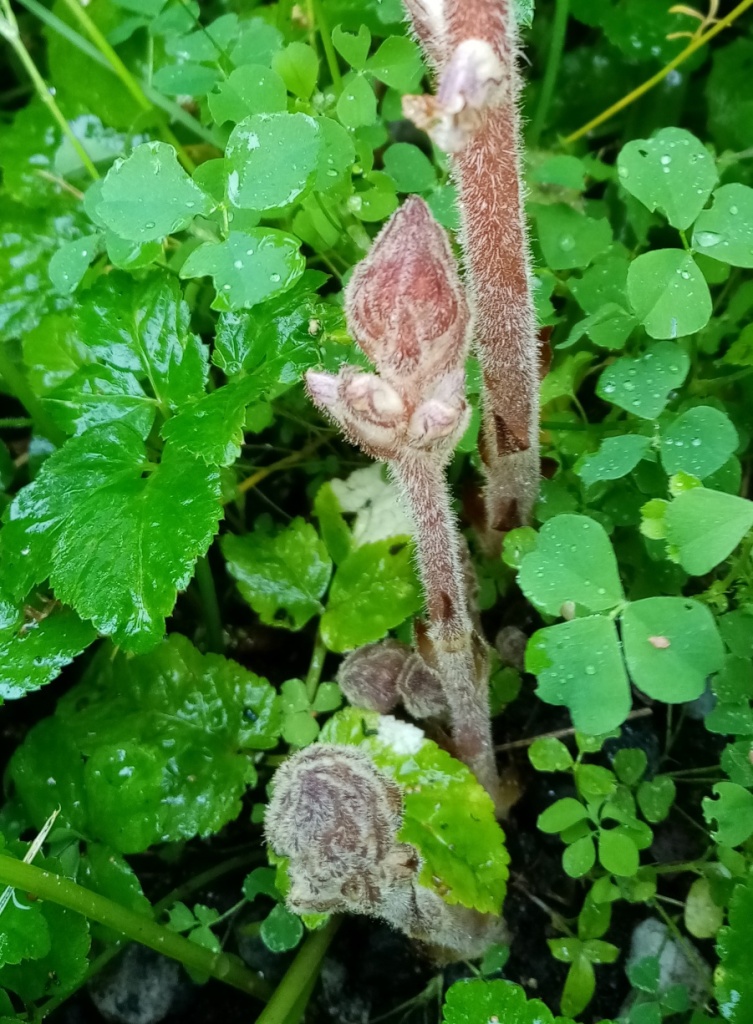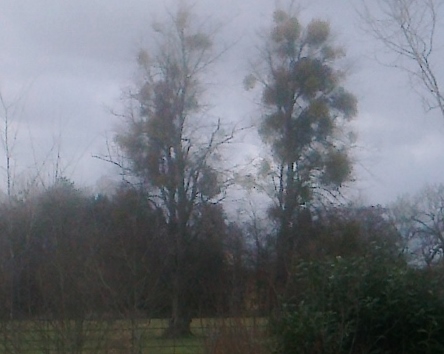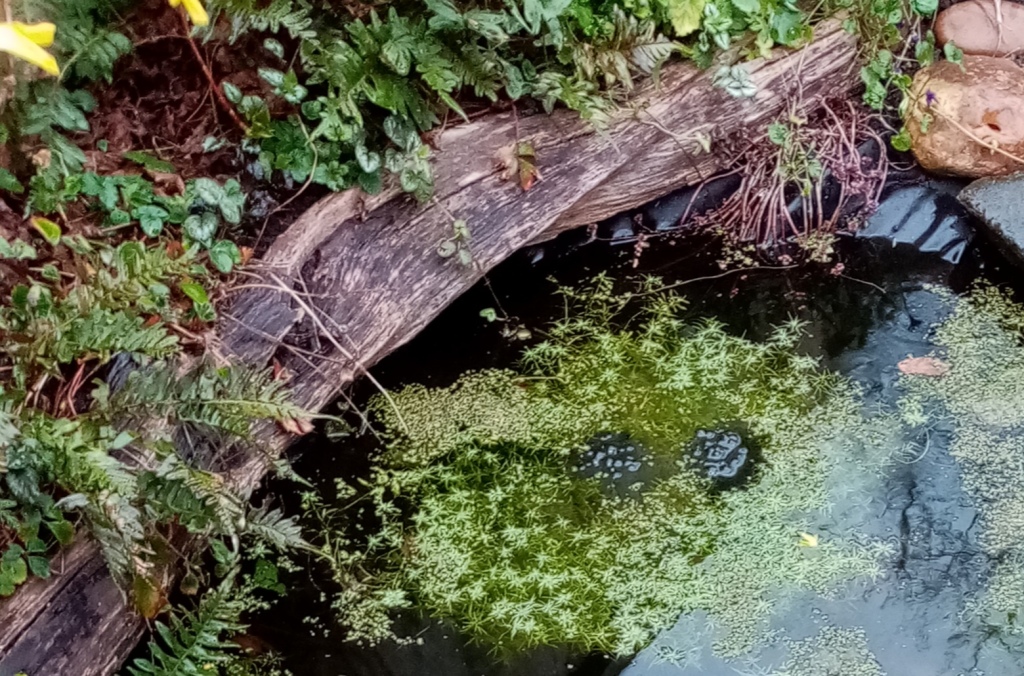
Mrs T had been subdued, hardly mentioning the lack of frogspawn in our garden pond. It’s an annual worry: will they lay this year? Last summer neighbours cleared a neglected garden and disturbed many frogs in the ivy that was undermining the garden wall.
I said nothing; till today. As I let myself through the back gate I heard a croak, a full-throated, joyous croak. At least one frog was alive! Naturally I peered into the pond and there I saw two mounds of frogs’ eggs. Had a certain friend brought some from her garden which always has a surplus?
Not at all, these had been laid overnight. Coming later in the season they are less likely to be killed by frost, though we’ll have to be on hand to cover the pond overnight with bubble wrap. Let’s live in hope, and continue to provide places of refuge amid ground cover plants such as ivy, periwinkle or these violets.
